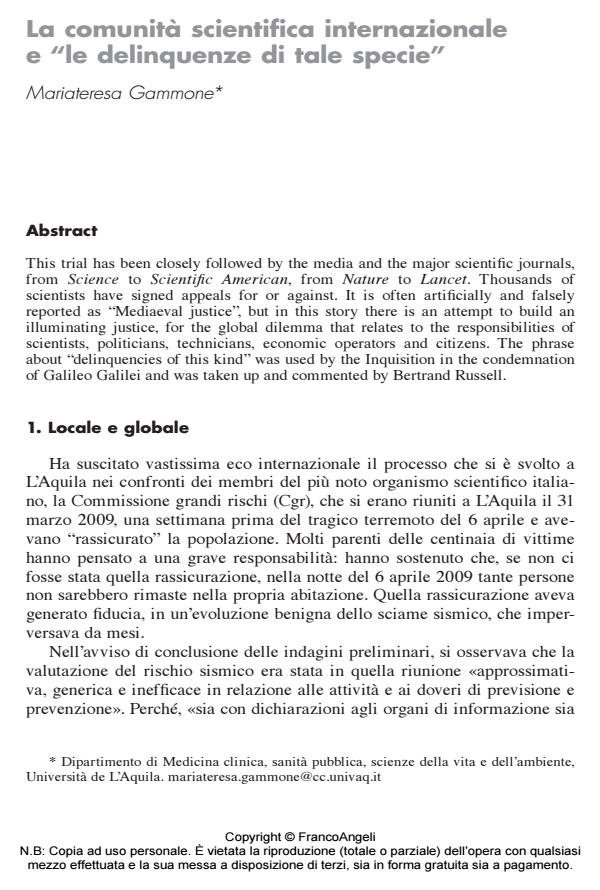La comunità scientifica internazionale e "le delinquenze di tale specie"
Journal title SICUREZZA E SCIENZE SOCIALI
Author/s Mariateresa Gammone
Publishing Year 2013 Issue 2013/2
Language Italian Pages 17 P. 165-181 File size 282 KB
DOI 10.3280/SISS2013-002013
DOI is like a bar code for intellectual property: to have more infomation
click here
Below, you can see the article first page
If you want to buy this article in PDF format, you can do it, following the instructions to buy download credits

FrancoAngeli is member of Publishers International Linking Association, Inc (PILA), a not-for-profit association which run the CrossRef service enabling links to and from online scholarly content.
This trial has been closely followed by the media and the major scientific journals, from Science to Scientific American, from Nature to Lancet. Thousands of scientists have signed appeals for or against. It is often artificially and falsely reported as "Mediaeval justice", but in this story there is an attempt to build an illuminating justice, for the global dilemma that relates to the responsibilities of scientists, politicians, technicians, economic operators and citizens. The phrase about "delinquencies of this kind" was used by the Inquisition in the condemnation of Galileo Galilei and was taken up and commented by Bertrand Russell.
Mariateresa Gammone, La comunità scientifica internazionale e "le delinquenze di tale specie" in "SICUREZZA E SCIENZE SOCIALI" 2/2013, pp 165-181, DOI: 10.3280/SISS2013-002013